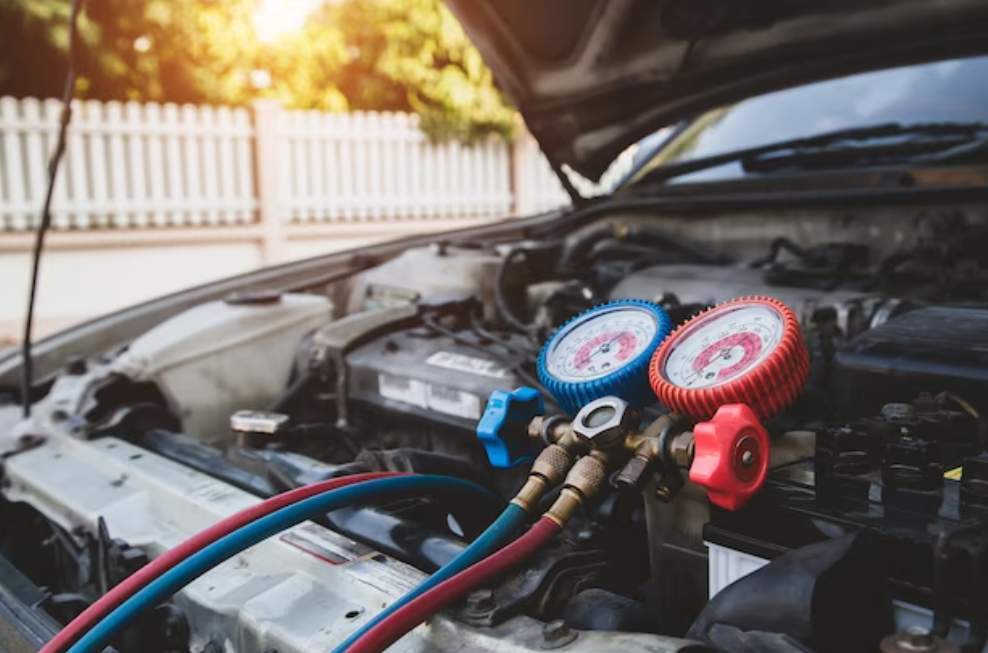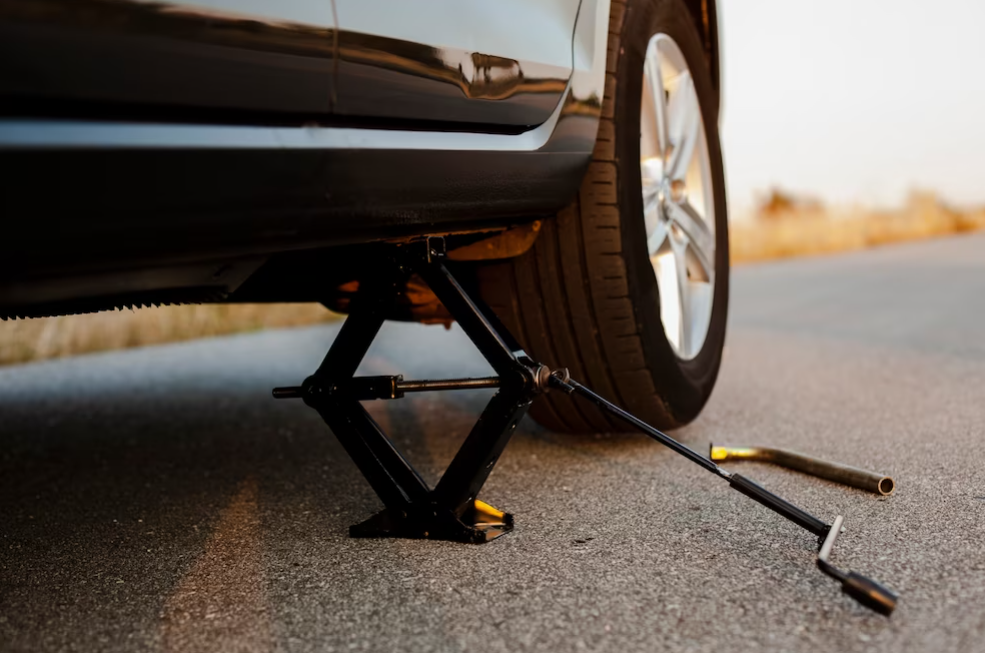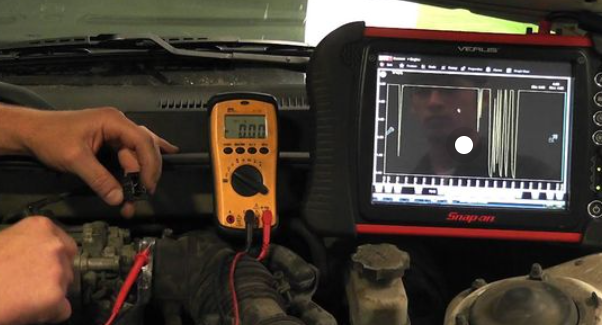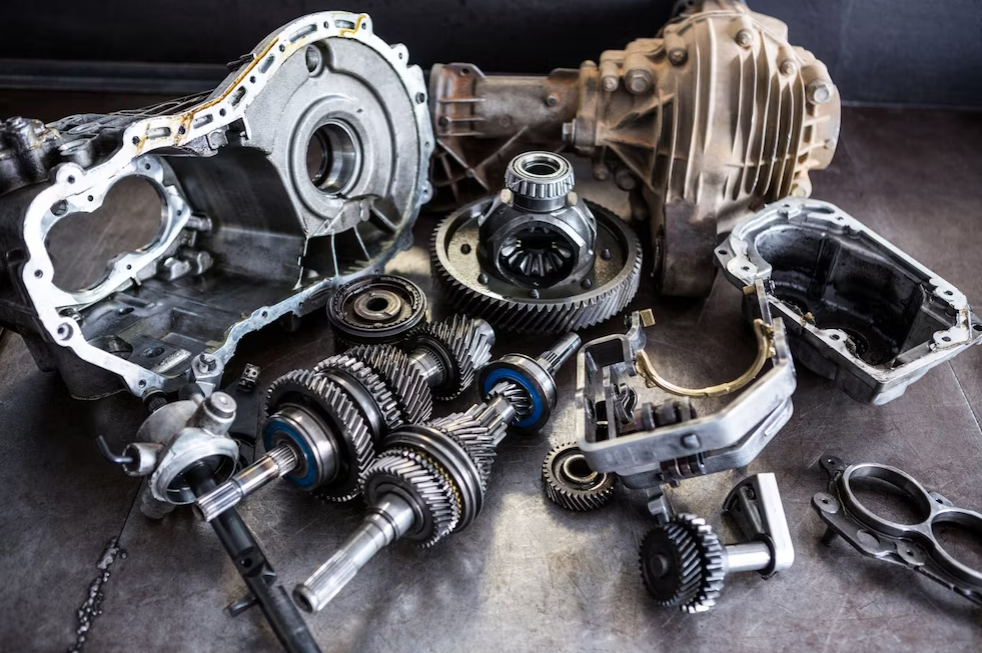How to Remove Oil Stains from Concrete
Removing oil stains from concrete can be an intimidating task, but it doesn’t have to be. With the right techniques and materials, you can easily remove typical oil stains and make your concrete surface look like new again. Because different types of oil require different tactics for removal, understanding the basics and having some knowledge of which products are best for each situation is essential in achieving successful stain removal. We’ll provide step-by-step instructions on how to tackle those annoying oil stains from your concrete surfaces!

How to Identify Oil Stains on Concrete
The initial and vital step in the remediation process is the identification of oil stains on concrete. Such stains are typically recognizable due to their darker hue, a smoother texture than the surrounding surface, and occasionally, the presence of a subtle, oily scent. Recent activities such as vehicle maintenance or the use of oil-based tools can be indicative of the source of the stain.
A simple water droplet test can also help confirm the presence of oil, as it will bead up and resist absorption. Sometimes, a comparison with unaffected concrete areas and the use of UV light can further assist in identifying oil stains. Once identified, the appropriate cleaning measures can be employed to restore the concrete's appearance and prevent further damage.
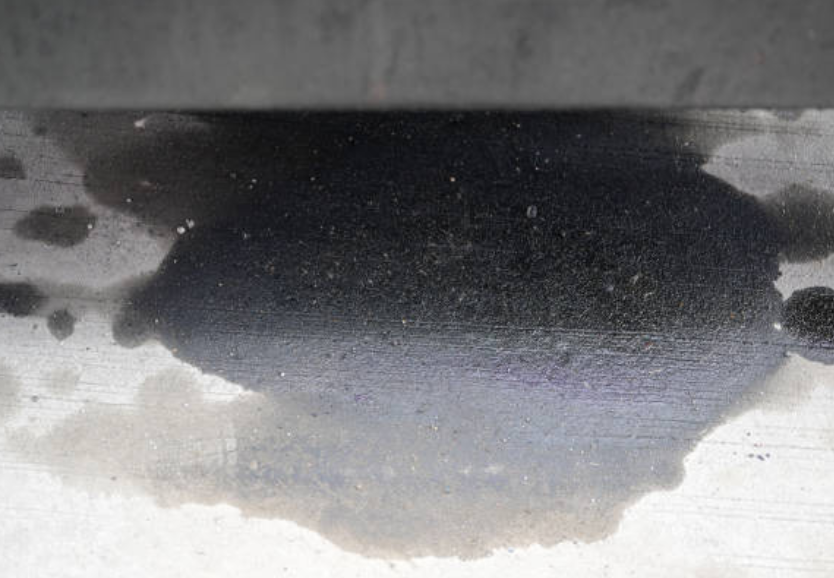
Materials you will need:
- Dishwashing detergent
- Hot water
- Stiff brush or broom
- Cat litter or oil absorbent
- Commercial concrete cleaner (optional)
- Pressure washer (optional)
- Baking soda
- White vinegar
- WD-40 or brake cleaner (optional)
- Kitty litter (clay-based)
- Hydrogen peroxide
- Protective gloves (recommended)
Step 1: Act quickly
The sooner you can address the oil stain, the better your chances of complete removal. Fresh stains are easier to tackle.
Step 2: Safety first
If you're using chemicals like commercial concrete cleaners, WD-40, or brake cleaner, be sure to wear protective gloves and work in a well-ventilated area.
Step 3: Prepare the area
Ensure the vicinity of the oil stain is free from any debris or loose dirt. Doing so will eliminate any potential interference with the cleaning process.
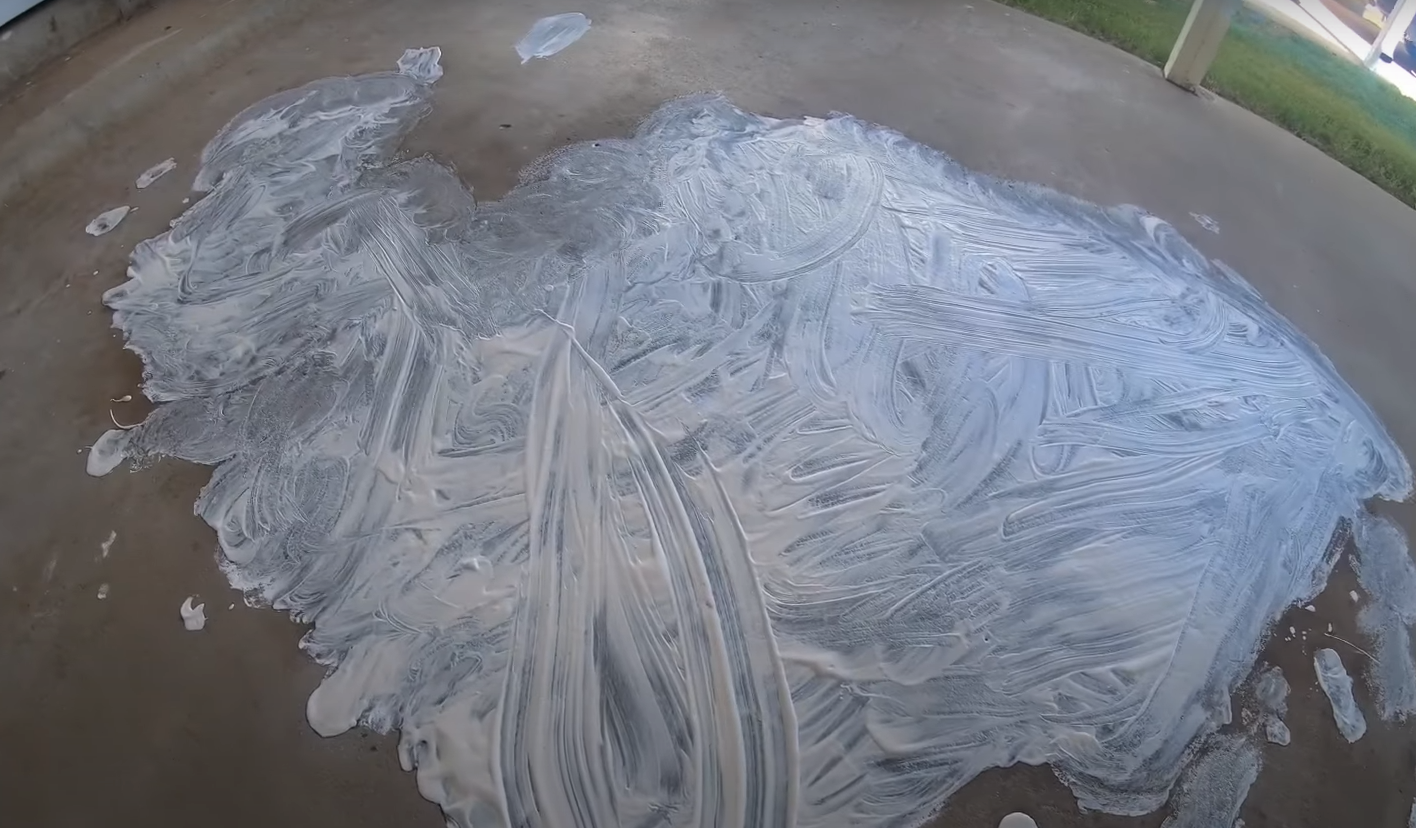
Step 4: Dishwashing detergent and hot water method
- Prepare a potent mixture by combining hot water with dishwashing detergent in a ratio of 1/4 cup of detergent for every gallon of hot water.
- Pour the solution directly onto the oil stain.
- Let it sit for about 20-30 minutes to break down the oil.
- Scrub the stain vigorously with a stiff brush or broom. Apply pressure to work the detergent into the concrete.
- Rinse the area with clean water to remove the detergent and oil residue.
Step 5: Cat litter or oil absorbent method
- Cover the oil stain with a layer of cat litter or oil absorbent, enough to completely cover the stain.
- Gently press the absorbent material into the stain.
- Let it sit for 24-48 hours to absorb the oil. For large or old stains, you may need to leave it longer.
- After the waiting period, sweep up the cat litter or absorbent and dispose of it properly.
Step 6: Evaluate and repeat (if necessary)
After following the above steps, check the concrete for any remaining stains. If the stain is mostly gone but some residue remains, consider repeating the treatment or trying another method. For stubborn stains, you can explore commercial concrete cleaners, pressure washing, or other methods mentioned earlier.
Step 7: Prevent future stains
To prevent future oil stains, consider sealing your concrete surface. There are various concrete sealers available that can help protect the concrete and make it easier to clean spills in the future.
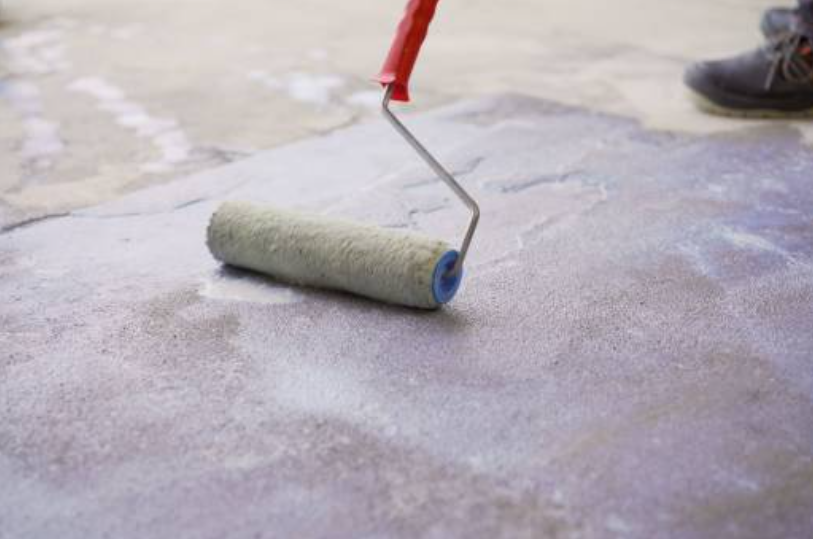
Preventing oil stains on concrete is essential to maintain the integrity and aesthetics of your surfaces. To minimize the risk of stains, use drip pans or absorbent mats under vehicles and equipment, promptly address any oil leaks, and apply a concrete sealer to create a protective barrier. Designated parking areas and covers for concrete spaces used for potentially messy projects can further safeguard against stains.
Regular inspection and immediate spill cleanup are vital practices. Additionally, having absorbent materials on hand, educating personnel, and ensuring proper drainage can all contribute to a stain-free concrete environment. These proactive measures will help preserve the cleanliness and longevity of your concrete surfaces.
-
What should I do if I can't completely remove an oil stain from concrete?
Some oil stains may be challenging to completely remove. In such cases, you can try to improve the appearance by repeating the cleaning process or consulting a professional for more advanced cleaning techniques.
-
Can oil stains on concrete cause damage?
While oil stains are unsightly, they usually do not cause structural damage to concrete. However, they can penetrate the surface and weaken it over time, so it's best to remove them promptly to maintain the concrete's longevity and appearance.
See another review here: What Is An O2 Sensor?



